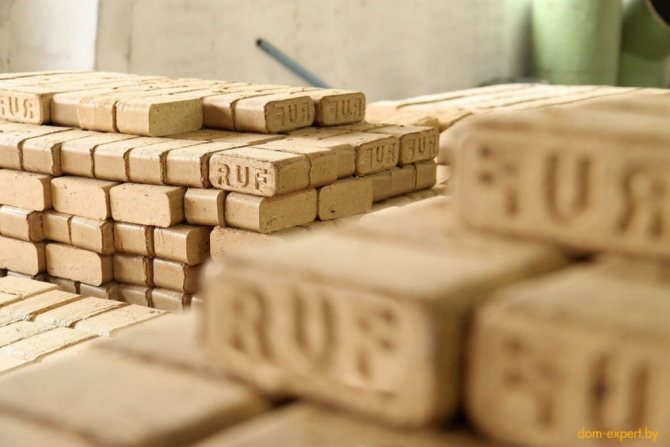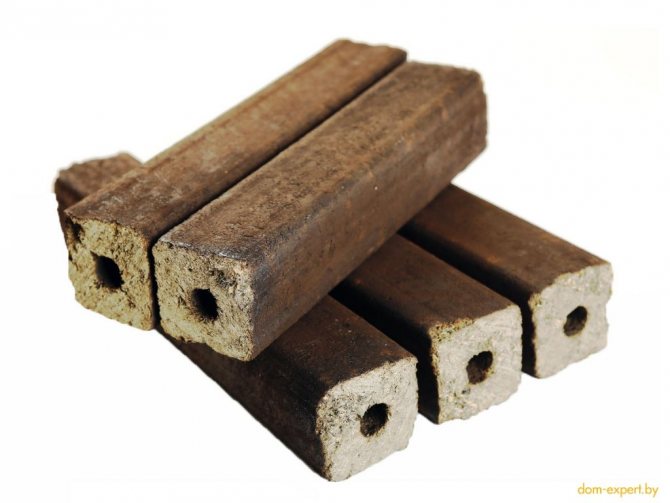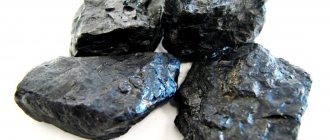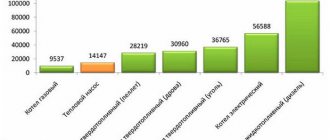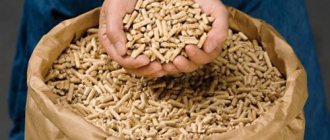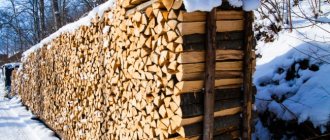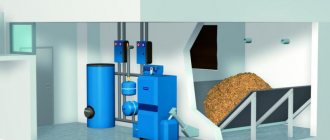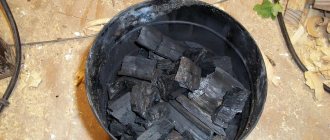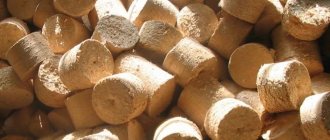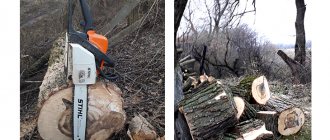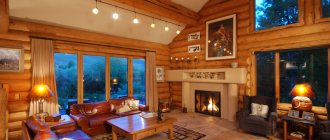What are pellets
Pellets are an energy carrier obtained from the remains of natural raw materials by a technological method, which is in the form of granules. Fuel cells come in different fractions, with a diameter of 0.4 to 1 cm and a body length of 0.315 to 5 cm. Typically, a production line is designed for the production of pellets from a certain material, therefore several types of such fuel enter the market.
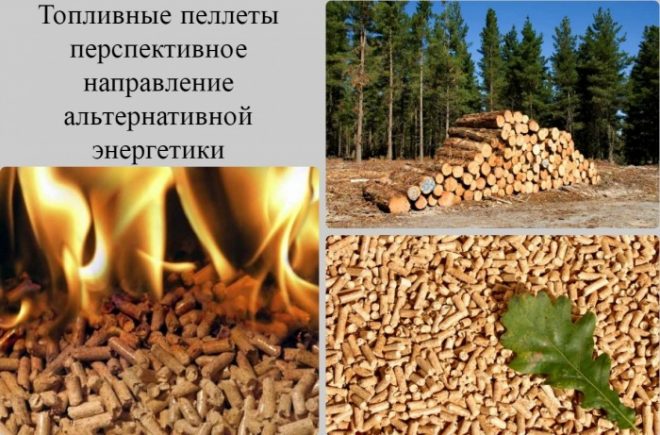
Firewood
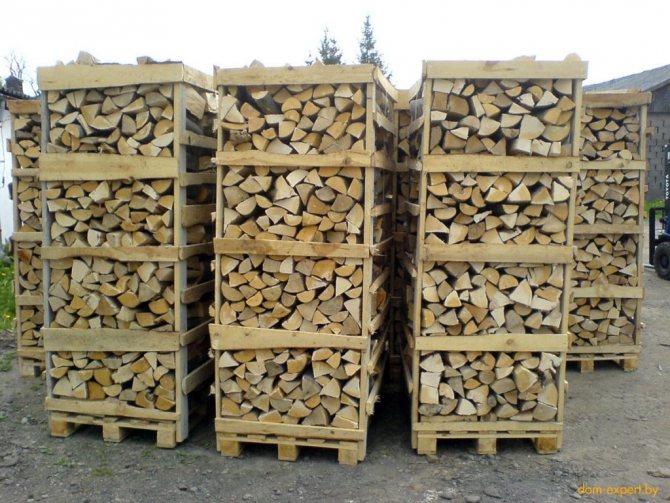

Many will say that dry hardwood is the best fuel. But this statement is true in relation to dry firewood - raw logs will smoke, "yak wet garret", but they will not be able to heat the house with them. Therefore, the preparation of firewood for the next heating season should be dealt with this winter. Chopped and folded under a canopy, well dried over the spring and summer, such firewood burns practically without smoke. The owners of pyrolysis (gas generating boilers) will confirm this - even slightly damp firewood does not burn in their boilers, they dry it for two years.
You can buy dry chopped firewood, but the price will not please - from 50 to 100 rubles per cubic meter (aspen, hornbeam, alder, birch). Plus shipping. For comparison, chopped, but raw firewood will cost less - from 30 rubles per cubic meter. There are, however, several nuances. Firewood can be bought in bulk or in boxes. The first option is cheaper, but the firewood is tightly stacked in the boxes, so there will be more logs in the "board" cube.
The cheapest are coniferous firewood (spruce, pine) - from 30 rubles. Soft-leaved (birch, alder, aspen) - 33-35 rubles. Hardwood (hornbeam, maple, ash, oak) - from 40 rubles.
If you want to wave an ax in the frost, you can order wood with chocks. It will come out, by the way, not much cheaper than chopped - 25-30 rubles, depending on the type of wood.
In regional gortops, you can buy up to 5 cubic meters of split firewood of mixed breeds at the state price - 28 rubles per cubic meter without delivery. The firewood from the gortop will be damp.
What are the pellets for the boiler
The type of granule depends on the material from which it is obtained. From this pellet has its own name:
- Woody;
- Coal;
- Peat;
- From the remains of vegetation;
- Thatched;
- Corn;
- From poultry droppings (chicken);
- On the basis of waste paper;
- From solid household waste.


Wood pellets for boiler
The most popular and consumed product. For the manufacture of pellets of this type, both coniferous and deciduous tree species are used. Any waste obtained in the process of woodworking is suitable as raw material:
- Sawdust;
- Shavings;
- Sawdust;
- Pieces of scraps;
- Croaker.
"White" pellets made of wood without bark inclusions have the lowest ash content, which is why they are highly valued. "Gray" wood pellets, which contain bark, are mainly used for powerful boilers. They are relatively inexpensive and have higher ash content.
Coal dust granules
Unlike wood pellets, where particles are retained by natural resins, carbon granules are pressed in a special way, with the addition of a binder. The method is called spiral pressing.
The result is a solid fuel suitable for use in any pellet boiler. One of the advantages of such a material, in addition to its high calorific value, is good transportable qualities - coal pellets are not prone to shredding during transportation.
Peat boiler pellets
Peat pellets contain pure peat and retain their shape due to internal binders that are activated when squeezed.They are fragile, so their diameter cannot be small and reaches a size of 12 mm. This type has a high energy consumption, economy in use. For example, if you burn a ton of material, the heat will be released exactly as much as when burning 475 cubic meters of natural gas, 1.5 tons of wood or 500 liters of diesel fuel.


Pellets from plant residues
Another name for such fuel is agropellets. They look brown in color, the raw material is agricultural waste, namely, buckwheat husks and sunflower husks.
Due to the fact that the initial material contains particles of sand, earth, dust and other non-combustible components, the agropellet has a high ash content. Its use is justified only for heating industrial enterprises. The price here is much lower if you take other material for comparison.
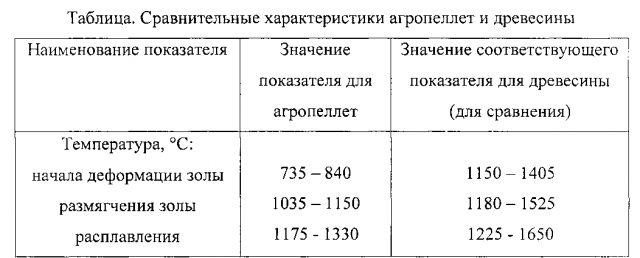

Straw pellets
In terms of density, calorific value is equal to wood pellets. They are cheaper than them, but have a high ash content up to 5.5%. After pressing, the pellet is resistant to moisture penetration, which has a positive effect on the fuel's ability not to deteriorate during storage.


Pellets from corn stalks
Although corn stalks can be classified as products of the agrosphere, pellets from them are fundamentally different from agropellets due to their relatively low ash content, which is only 2.6%. Additional advantages include a very long burning time, high density and caloric content. Due to its low weight, such a product is easy to pack, load and transport.
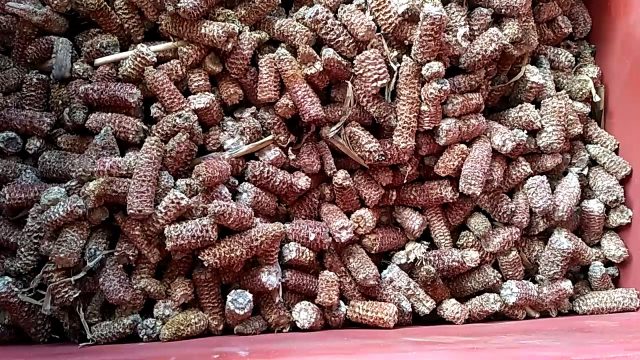

Pellets based on chicken manure
Possible option of dual use of pellets from poultry manure - as fuel and granular fertilizers. Due to the high humidity, the raw materials are first dried in special rooms, and then crushed and pressed.
Such pellets contain many non-flammable inclusions, they are not suitable for work in private boilers due to their high ash content. It is most practical to use the product as a fertilizer - the droppings absorb moisture well and gradually release it to the plant roots.
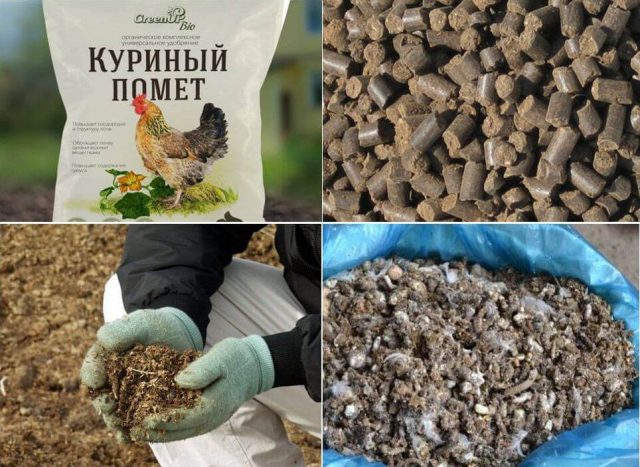

Paper pellets for boiler
To obtain granules from waste paper, a more complex technological process is used. Unlike any other raw material, paper needs to be moistened first before pressing.
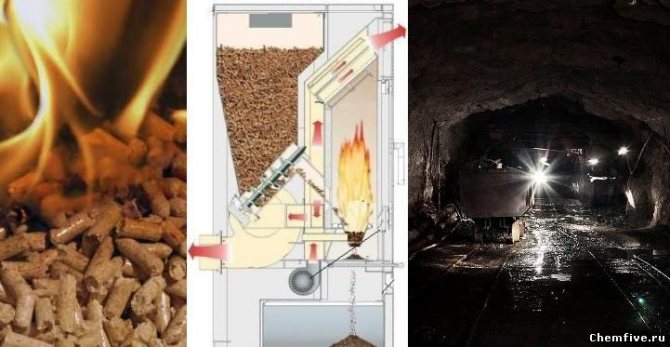

Owners of private houses and comfortable country houses often ask themselves the question: which heating system is better to implement? There are many answers to this question. From the use of electric heating elements to a small boiler room with diesel or natural gas. The most widespread are small furnaces with manual fuel loading and mini-boilers with automatic control. Modern technologies make it possible to control the operation of the boiler house through telephone communication, and inexpensive automation almost excludes the human labor of maintaining the fire in the furnace. Today we are going to compare the two most popular fuels for private boilers: coal and wood pellets.
From what was said earlier, it follows that the main advantages of coal are in the longer duration of combustion, which is explained by the higher density and high content of mineral inclusions. The advantages of wood pellets are associated with ease of ignition, uniform combustion and environmental safety. As for the raw materials and economic aspects of the issue, everything is not so simple here.
The main part of coal includes graphite-like carbon, sorbed and chemically bound coal tar, as well as up to 15-25% of mineral substances that form ash. The coal combustion process begins with pyrolysis and drying. In the course of pyrolysis, almost all of the coal tar, represented by aromatic hydrocarbons, is released.A feature of aromatic hydrocarbons as a fuel is a high carbon content at a relatively low ignition temperature of resin vapors. The combustion of coal tar produces significant amounts of soot and carbon monoxide. To prevent these phenomena, fine adjustment of the air supply and precise design of combustion devices are required, depending on the type of fuel and the productivity of the furnace. Since boiler plants are not designed for a specific grade and brand of coal, but the productivity is regulated by automatic equipment depending on the required temperature in the room, in practice it is impossible to achieve the optimal mode. Either a lot of air flies through the furnace and we have a carryover of heat, or, on the contrary, there is little air and the soot does not completely burn out - we have a carryover of fuel from the furnace in the form of soot and carbon monoxide. In practice, these phenomena lead to a decrease in the calorific value of a unit of coal by 10-30% compared to theory.
In the case of wood pellets, we have a classic wood burning process, but with two subtleties. Firstly, the wood is dry enough, which negates the contribution of the drying processes at the beginning of combustion and increases the calorific value of pellets in comparison with wood in blocks (logs). In addition, pellets are formed from small pieces of wood, which leads to their destruction during combustion. In some cases, destruction somewhat disrupts the operation of combustion devices, but more often it only compensates for the decrease in the outer surface of the pellets as they burn.
Low moisture content and significant mechanical strength of the pellets are due to the production technology. The starting material goes into production in a finely dispersed form with a moisture content of about 15-30%. Forming involves hot pressing in a sheet or drum die. The drum matrix has a higher productivity, the sheet matrix provides greater mechanical strength and uniformity of the pellet size. Hot pressing leads to wood drying and the formation of a thin film of melted lignin on the surface of each pellet (as well as between wood particles in the pellet). This effect is most pronounced for resinous wood species. Therefore, pellets have a moisture content of 5-12%, which is much lower than the moisture content of lump wood stored under normal conditions. As a result, pellets have a significantly higher calorific value than regular lump wood. If for process firewood with a moisture content of 30% (ash content 1% of dry matter), when burned in a conventional boiler house, the calorific value is in the range of 10.1 - 11.2 MJ / kg, then for pellets with a moisture content of about 5%, the calorific value is noticeably higher and reaches 21 MJ / kg. For birch bark pellets, this value reaches more than 28 MJ / kg.


The table shows the values of the calorific value and density of various types of raw materials for the production of pellets, as well as the density of these materials. During the production of pellets, the density increases to 0.9 - 1.2 g / cm3. The increase in density not only increases the mechanical strength of the pellets, but also contributes to the convenience of transportation and storage of fuel.
Among the clear advantages of pellets over coals, it is worth noting high environmental safety. Wood pellets contain up to 60-90 times less sulfur than coal, which improves the ecological situation in the region and reduces the corrosion of combustion devices. In addition, a long stay in the soil at great depths contributes to the accumulation of significant amounts of compounds of heavy metals and radioactive elements in the coals. Based on the peculiarities of osmotic processes during tree growth, the content of heavy metals in wood is hundreds of times lower than in fossil coals. The ash content of the wood is only 0.2 - 0.5% of the original mass.Ash is represented by lime, potash, iron scale, silicon dioxide, magnesium compounds and other non-hazardous compounds that can be successfully used as a universal fertilizer on acidic and neutral soils.
Among the advantages of coals, one can note a slightly lower cost, a higher loading density and a noticeably longer burning time. The latter advantage will gradually disappear due to the proliferation of automatic boiler installations, which are much more convenient and easier to use. A large amount of loading into a hopper of the same size is a noticeable advantage only for coal chips of a certain size, the cost of which increases with the increase in the spread in the size of the fragments. The most significant advantage of coal is its cost. As of 2014, 1 ton of coal in Krasnoyarsk had a market value of 1.5 to 3.0 thousand rubles. While wood pellets cost about 4-5 thousand rubles per ton. At the same time, the calorific value of heating coals is in the range of 8 - 20 MJ / kg. That is, the calorific value of pellets and coal are close, with almost a twofold difference in price. It should be noted that automatic boiler plants are capable of working only with coals of a certain fractional composition, the cost of which is much higher than lump coals. Automatic boiler plants for coal dust are produced only with a sufficiently high power, and they have a high cost price. Coal dust pellets have a price not lower than that of wood pellets.
Thus, we come to the conclusion about the significant advantages of wood pellets over fossil coals. In the fuel energy industry, these advantages mean little, first of all, due to the significant reserves of coal in comparison with the volume of production of vegetable raw materials. But, for heating systems of private houses, the displacement of coal with fuel pellets is only a matter of time.
How pellets are made
When making pellets for a boiler, the raw materials must go through a certain technological process on the production line. The main stages of this process, using the example of obtaining wood pellets, are as follows:
- Crushing into coarse fraction - at this stage, woody parts of different sizes lead to a state of homogeneous mass by a crushing plant;
- Grinding into a fine fraction using a hammer mill - the particle size of the resulting raw material should not exceed 6 millimeters;
- Drying to the state of material moisture content in the range of 8.0 - 10.0% in belt and drum drying installations;
- Pressing in a pellet press. At this stage, the mass is heated to a temperature of 120 degrees Celsius and pressed through the matrix;
- Cooling (if necessary) and packaging of the finished product.
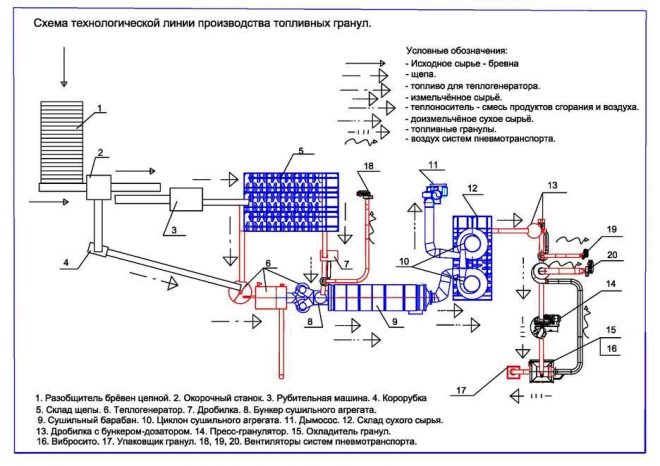

In the manufacture of agricultural pellets from sunflower husk, the stage of raw material crushing is excluded from the technological process.
Selection of pellets for boiler plants
Industrial boilers are usually designed for heavy loads and are not as demanding on raw materials as their domestic counterparts. In order for the boiler to effectively provide heating of the house on the pellet, in addition to its type, you need to pay attention to the following technical indicators, which must be indicated by the manufacturer:
- Product moisture - for normal ignition and maintaining combustion should be within 8%, over 14% - the material is not suitable for use;
- Heat transfer during combustion - it is better if it is around 4.5 and above kcal / kg, like wood pellets, but 4.3 kcal / kg is also acceptable;
- Ash content of the product - has an upper tolerance threshold within 1%, if this limit is reduced to 0.5%, then the boiler can be cleaned no more than once a month.
In addition to all of the above, the pellets should be visually inspected for cracks.
High-quality material has a shiny surface, does not crumble and breaks with difficulty.When the granules are dipped into water, they should eventually turn into a soggy mass, if this did not happen, it is likely that a chemical adhesive component was used in their manufacture, which is unacceptable. The presence of coarse sediment of small stones and sand also indicates a poor quality of the product.
Pros and cons of fuel pellets for the boiler
The obvious advantages of granular fuels are that they are easy to transport and store. In addition, granules have:
- High heat transfer, which is 2.5 times more than that of wood;
- Low ash content, which allows you to spend less time on boiler plant maintenance;
- Low percentage of humidity, which has a positive effect on the functioning of the heating system, increasing its service life;
- High density - a smaller amount of such fuel is capable of producing as many calories of heat as another energy carrier with a large volume.
The most significant disadvantage of fuel pellets is that they can only work in special boilers that have an automatic supply of energy to the burner. The price of such equipment is much higher than the cost of ordinary solid fuel boilers.
Let's go a little deeper into the essence!
Industrial production
For the manufacture of fuel pellets, wood is used, which simply will no longer find any other use, that is, waste.
Notice! To make quality pellets, this wood must have no bark!
How are pellets made?
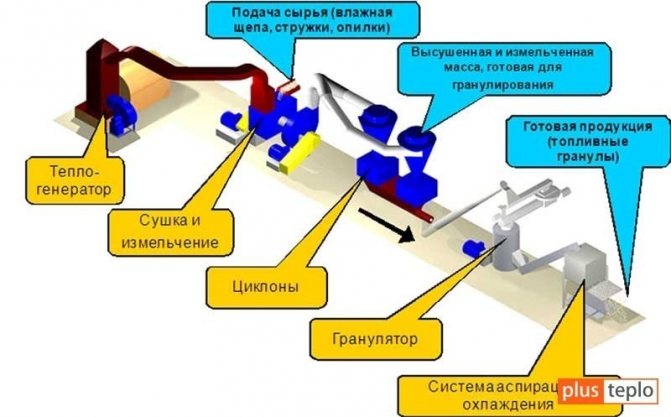

Production process diagram
Small pieces of wood pass through a separator, where sand, dirt, slag, metal nails (a magnet works here), etc. are sifted out of them.
On a conveyor belt, all this cleaned "good" is sent to the bunker of the hammer crusher, at the exit of which the wood turns into fine-grained sawdust.
Then this mixture of sawdust is fed to the dryer, where the raw material dries completely.
To convert raw materials into pellets - granules use a press granulator. In it, under the influence of high temperature steam and intensive mixing, the raw material in the form of dried wood "flour" turns into dough. The resulting mass is again dried and fed to the matrix, where granules are obtained from flour under high pressure (300 atm).
The resulting wood pellets have a significantly higher density than the density of the wood from which they are made. This is due to the processes of adhesion of the material that occur during the production of granules. Bonding is due to the substance lignin in the wood.
Lignin is a part of wood cells. In the process of cell destruction during mechanical processing and further heating of wood raw materials, lignin is released. At high temperatures, it melts and forms a kind of natural glue, which reliably glues the substance of the wood pellet during the pressing process.
After squeezing through the matrix, the pellets are cooled and then packed into bags.
Handicraft production
The production of pellets at home is intensively discussed on fuel forums, where you can go if you are interested in this issue. A little later we will consider this topic in one of the headings of our site. But now…
Now we believe that making pellets at home is profitable only with their further sale, that is, sale. To produce homemade pellets, you need to invest money, a lot of your time in the manufacture of equipment. And then it's time to spend on the production process. The cost of pellets for heating in the Russian-speaking space is 70-80 USD. per ton. At this price, they are easier to buy. And for sale abroad, where their price easily doubles (with the appropriate quality of fuel pellets), it is necessary to go through a rather difficult path.
Note, we are not discouraging you from producing pellets on your own, we just advise you to consider this topic of growth from mini pellet production in the future to a larger scale. Ideally - with the possibility of exporting products abroad.
What's better?
Firewood or pellets? What to give preference to?
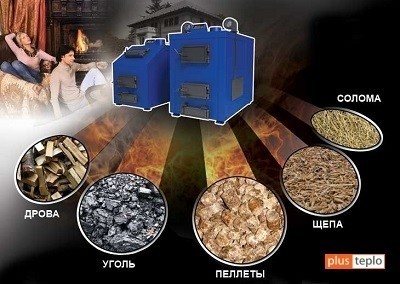

Firewood or pellets
Let's analyze some fuel parameters:
1. The calorific value or combustibility of fuel pellets exceeds the parameter of the same name of wood by 2.5 times.
This is explained by the increased carbon content in the "newfangled" material. In an ordinary tree, carbon is a constituent of all its cells in cellulose molecules. Also, cellulose contains oxygen and hydrogen atoms in its molecule.
During mechanical "destructive" processing, many cellulose molecules are damaged. In this case, the aforementioned hydrogen and oxygen atoms volatilize in the form of volatile gases, water vapor, acids and the simplest alcohols.
The amount of material has become less, and the content of "combustible" (carbon) in it has been preserved - hence the increased calorific value of the material.
2. "Purity" of the material - this parameter is of great interest to Europeans.
Everyone knows that when wood is burned in a furnace or even in a fire, ash is formed. The mass fraction of this ash is at least 15% of the initial mass of wood. These are non-flammable resins and minerals. So there you go! Ash from fuel pellets is 0.5-3% of their initial weight, which is 15-20 times less than "wood" ash.
3. Ordinary wood contains at least 2 times more moisture than pellets made from it.
4. The density of the pellets is much higher than the density of wood. Pellet sinks in water. This increases the profitability of this type of fuel during transportation and storage.
Considering the ratio of "pellets or gas", there will be more advantages for gas. Including the cost of heating, where pellets are now in second place.
But the projected rise in prices for natural fuel reserves will lead to the fact that pellets will come out on top in terms of fuel economy and efficiency for heating systems.

